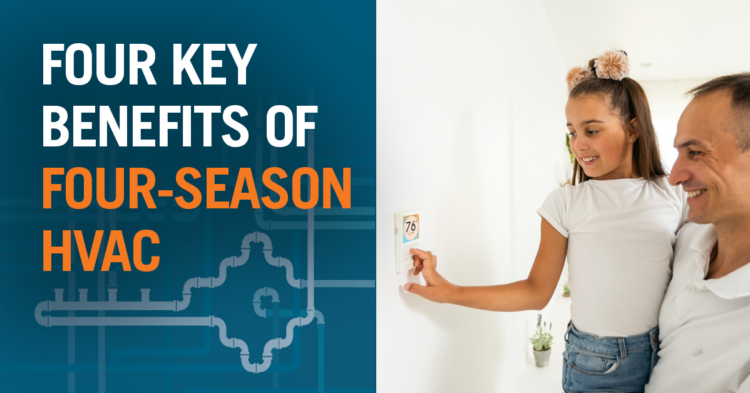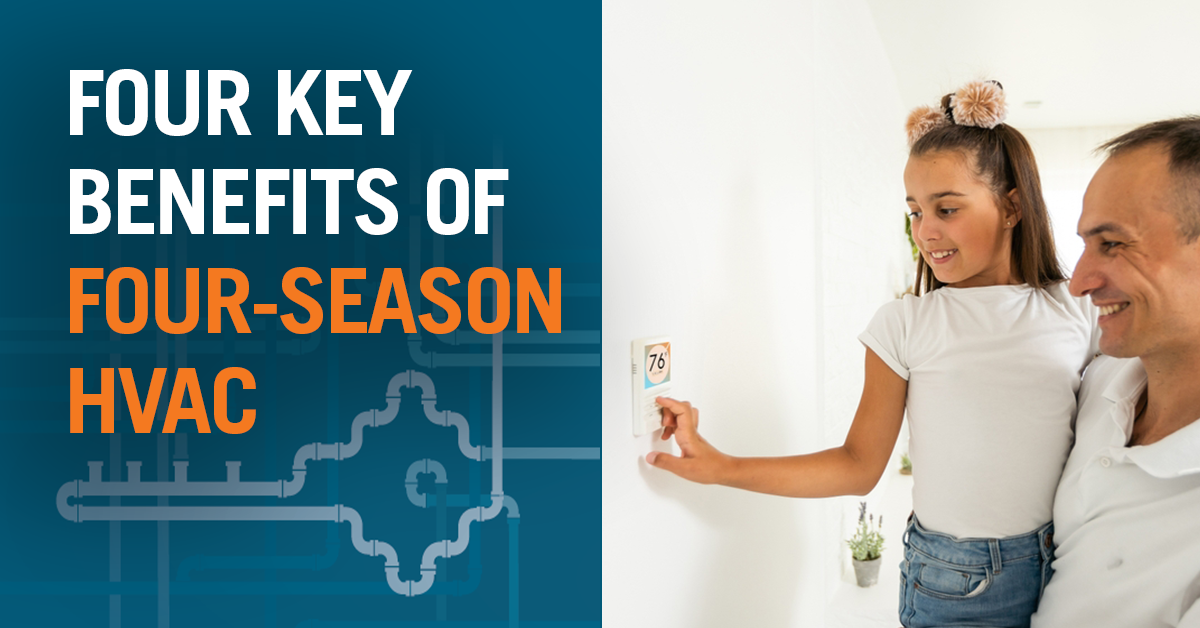As summer winds down, we’re heading into what many of you with two-pipe hydronic HVAC systems in your buildings will face with some trepidation—the fall shoulder season.
You can already hear it: complaints by residents who feel—regardless of local ordinances—that it’s too warm to turn on the heat. Others will just bear it, throwing open windows and running fans to find relief. And your building engineers may be holding their breath, knowing that switching from cooling to heating can cause leaks and breakdowns—signs of systemic weaknesses in this older-style HVAC infrastructure.
If this sounds familiar, it might be time to consider upgrading to a four-season HVAC system.
What’s a four-season HVAC system? It’s any system that gives residents the freedom to control the climate in their own apartments or condo units. Residents can run the heat or air conditioning any time, ensuring year-round comfort.
You have several options, such as water source heat pumps, four-pipe fan coil systems, and variable refrigerant flow or direct expansion systems. In this post, we’ll cover the benefits of converting from a two-pipe system to any of these four-season HVAC systems. The best system for your situation will depend on a wide range of factors unique to your building.
With that in mind, let’s dive into four of the strongest benefits you can experience with this kind of upgrade.
Benefit #1: Enhanced Quality of Life
A four-season HVAC system enhances residents’ quality of life and creates a healthier environment by putting temperature control in their hands. As we mentioned above, a two-pipe hydronic system (also called a two-pipe fan coil system) requires you to switch the entire building from cooling to heating or vice versa during seasonal transitions (also known as shoulder seasons).
This creates an uncomfortable—and possibly unsafe—situation for residents when the weather is unusually warm or cool. The turnover period can leave residents with no cooling or heating for two to three days, a sluggish changeover that’s simply out of step with residents’ expectations.
In contrast, four-season HVAC systems do away with shoulder seasons, allowing residents in each unit to individually adjust their climate as they see fit. This in-unit control increases resident satisfaction and creates a safer environment by eliminating dangerous spikes or drops in temperature during times of unseasonable weather.
Residents also experience less frequent outages and fewer leaks, which translates to fewer issues with water damage, mold, and downtime for repairs.
Benefit #2: Energy Efficiency and Cost Savings
Improving energy efficiency is an important part of any building management strategy. Old two-pipe systems are inefficient, an issue further amplified by frequent leaks and damaged insulation. When the time comes to replace your system, converting to a four-season HVAC system will reduce energy consumption and related operations costs.
How? In many ways. For example, the systems use less energy because of variable speed motors, high-efficiency compressors, and improved insulation. These component technologies also improve temperature controls across the building, reducing the load on boilers and chillers, which reduces energy costs. In our firsthand experience, properties that make the switch to a four-season HVAC system have seen 10%–25% savings annually in HVAC-related utility bills.
One other operational plus: If you choose a decentralized four-season system, problems are isolated when something breaks, so the whole community won’t be affected.
Of course, some modern HVAC systems qualify for energy rebates and incentives. We highly recommend speaking with an expert to find out which may be available to you!
Benefit #3: Increased Rent
If you’re an apartment owner who invests to install a four-season HVAC system, you’re making a significant capital improvement to your property and introducing a highly desired amenity, both of which can allow you to increase rental revenues.
Of course, individual condo unit owners who lease their homes may also be able to increase their rental price.
Benefit #4: Increased Property Value
Taken together, the first three benefits contribute to what is, for many people, the biggest reason to upgrade to a four-season HVAC system: increased value. Upgrading to one of these systems can substantially boost the capitalization rate of an apartment property as operations costs go down and rents and retention rates go up. Similarly, a condo community may be able to eliminate utility- and maintenance-related increases in monthly assessments while also improving the sales value of individual units.
Conclusion
When your existing two-pipe hydronic HVAC system has reached the end of its useful life, you can increase the total value, efficiency, and desirability of your properties by converting to a four-season system. The benefits can range from improving residents’ quality of life to bolstering energy efficiency to increasing rental revenue, selling price, and your property’s overall value. The investment not only promises long-term cost savings and enhanced resident satisfaction, it also addresses the growing need for energy-efficient and sustainable living solutions.




